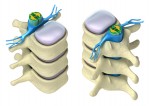How do I know if the Pettibon System will work for me?
You will not be automatically put under Pettibon care. You may just be a candidate for regular chiropractic care. We will first determine how you will respond to the care and this requires testing. In one test, you will wear your custom Pettibon System Weights and have your neck re-x-rayed. 
What am I responsible for doing?
With the Pettibon System, you actively participate in your own care. With the proper guidance, you can make a lasting change to the longevity of your spine and nervous system.
When you come to our office you won’t see magazines with the latest on popular culture because you will not be sitting passively waiting to see the doctor. This valuable time will be spent helping your self by doing warm up exercises stretching muscles, ligaments and discs using the Wobble ChairTM and the Repetitive Cervical TractionTM.
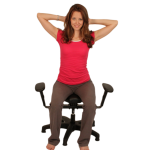
The Repetitive Cervical Traction and Wobble Chair produce a temporary soften the discs in the neck and back making spinal correction easier. When the tissues are re-hardening you will have your Pettibon Weighting System on. This makes it so the discs and ligamentous tissues stiffen back up while you are in the new posture. Strengthening postural muscles and building endurance is an 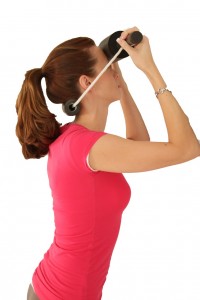
What does this process look like and does care go on forever?
The Pettibon System is done in three distinct phases.
Phase I – Acute Care
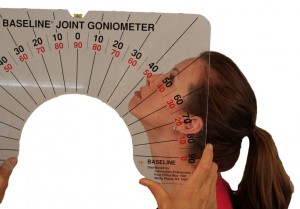
Each visit to the office includes a functional, neurological, and postural examination. Your spinal adjustments will be based on visual examinations, palpatory assessment and your x-ray findings. These precise adjustments consist of forces which create more space between your vertebrae and are more effective for relieving nerve compression. More importantly, these adjustments are proven to be necessary for spinal correction.
At the end of acute care, you are re-x-rayed with weights on to assess exact weight increments to correct the curves in your spine and give you great posture.
Phase II – Rehabilitation and Correction
Permanent spinal correction is the goal of rehabilitation. A lasting correction requires use of the Wobble Chair, Head/Shoulder and Hip Weights, Dynamic Linear Traction, Spinal Molding and 
Phase III – Maintenance and Supportive Care
The purpose of the final phase of care is to maintain and enhance your spinal correction, muscle strength and endurance. The forces, such as bending, lifting, computing, etc., that got you into a poor posture will still be working to counteract good posture but continued home care will help maintain the posture you have worked to achieve. Periodically, you will come to the office to do a full workout also incorporating whole body vibration. The doctor will give you a brief functional, neurological and postural exam. You will only be adjusted if the doctor’s analysis shows this is necessary. With this partnership approach, you should expect to keep your spine healthy for the rest of your life.
The Pettibon Weighting SystemTM
How then do Pettibon practitioners take these principles and put them into practice by re-aligning the spine so that it can function optimally in its upright position relative to gravity? They apply the science at the core of The Pettibon System: The patented Pettibon Weighting System.

How the weights work: Wearing the weights alters the head’s, thoracic cage’s and pelvis’s centers of mass, causing the righting reflexes to send spine correcting sensory input to the nervous system. To balance the body to the weights, the nervous system’s innate organizing energy causes some involved spinal muscles to relax and others to contract, thereby repositioning and correcting the spine and posture relative to gravity. This works on the same principle that is seen when a student wears a backpack full of books and hunches forward or a woman wears a purse and lifts the shoulder that the purse is hanging from. With the Pettibon Weighting System the weights are strategically placed on the body to create a desired posture correcting response. The weights make the involved muscles do isometric exercises, needed to restore their strength, endurance and balance.
Why Isometric Exercises?
Two kinds of muscle fibers make up the musculoskeletal system. One is fast-twitch muscle fiber. The other is slow-twitch muscle fiber. Muscles have both types of fibers but usually one fiber type dominates a muscle group. Our postural muscle fibers have mostly slow-twitch fiber. IMAGE 56 Stock of muscle fibers
In the gym, when we’re ‘pumping iron’ and doing aerobic exercises, we’re affecting fast-twitch muscle fibers or phasic muscles. What’s happening to our postural muscles?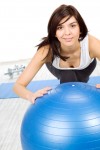
When phasic muscles fatigue and/or when they’re injured they go flaccid and collapse. Postural muscles react very differently from phasic muscles when they’re injured or fatigued: they spasm. Like sitting at a desk for an extended period and our mid back getting stiff and sore. The way postural muscles spasm is rarely symmetrical and that is why poor posture distorts our appearance and spinal alignment.
Isometric exercises, which involve pushing against a force that moves very slowly or doesn’t move at all, help eliminate postural muscle spasms as well as rehabilitate their balance, strength, and endurance.
Soft Tissue Physiology & Function
Three different types of forces can injure the spinal system: sudden applied, repetitive, and cumulative. A whiplash is the most common example of a sudden applied force. Repetitive and cumulative forces come from time dependent functions of our positions over long periods. In other words, the spine’s positions in work, play, or daily living activities like sleeping, reading, watching TV, etc can injure the spine. Understanding how soft tissues react to these forces provides the reasons why conventional chiropractic doesn’t produce permanent spine and posture correction. And more importantly, it explains why The Pettibon System does! IMAGE 60 “Severe spinal damage at 0mph”
Why take seated x-rays?
The Pettibon System starts with an x-ray examination. Seven views of the spine are routinely taken. X-rays help determine if and how you will respond to care.
The initial set of examination x-rays are compared to x-rays taken during treatment to assess progress and ultimately to prove the treatment’s success. Whether the x-rays are for diagnosis, testing, assessing progress, post-treatment evaluation and/or proof, patients are seated and the x-rays are always taken, marked, and measured the same way, every time. This ensures scientific validity.
Why seated?
When we go from a standing to a sitting position, we increase pressure inside the spinal discs by 30%. When we go from lying down to sitting, the pressure is increased by 50%.
So, Pettibon x-rays are taken seated to increase stress in the
spinal discs. Having you seated for x-rays also eliminates the influence of unequal contraction from the legs’ muscles that attach to the spine.
Conventional chiropractic x-ray procedures may not be considering spinal soft tissue injuries and the role they play in spinal alignment. The Pettibon System’s x-ray procedures do. Using laser aligned x-ray machines and repeatable positioning, Pettibon doctors can:
- Make valid scientific measurements of the direction and amount of spinal displacement
- Classify the configuration (balanced or un-balanced) and its severity
- Calculate the amount of soft tissue injury and impairment
- Show you how your spine compares to the optimum upright spine
- Determine if your spine will respond and correct under care
- Prescribe appropriate treatment plans and assess progress
- Prove that your care corrected your spine and posture by taking a post x-ray

